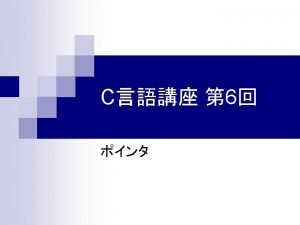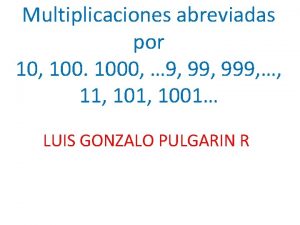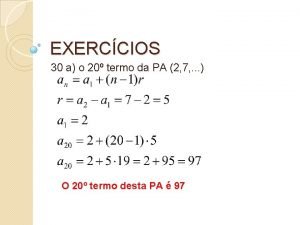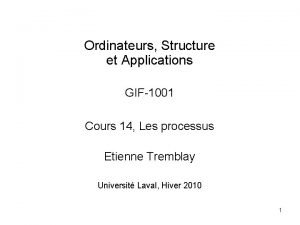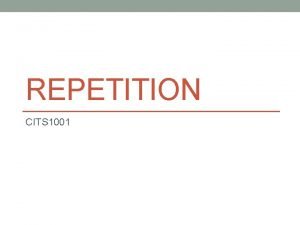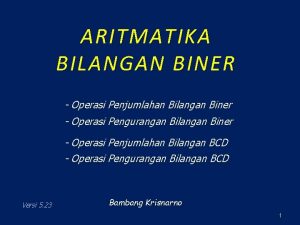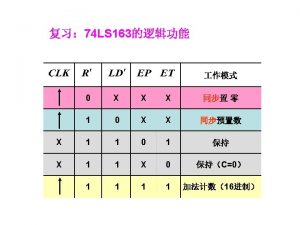ECON 1001 Tutorial 4 Q 1 When the



























- Slides: 27

ECON 1001 Tutorial 4

Q 1. When the price of hot dog is $1. 50 each, 500 hot dogs are sold every day. After lowering the price to $1. 35 each, 510 hot dogs are sold every day. At the original price, what is the price elasticity of demand for hot dogs? A) B) C) D) E) 66. 67 5 1 0. 2 0. 015 Ans: d

Calculating Price Elasticity of Demand

Price Elasticity of Demand for Hot Dogs

Q 2. For which of the following products is demand likely to be least price elastic? A) B) C) D) E) Frozen Food Soft Drinks Groceries Diet Coke Not enough information provided to answer this question Ans: c

What affects Price Elasticity of Demand? • One major factor is the availability of substitutes. • If there are many substitutes for Good X available in the market, people tend to be very responsive to changes in PX, and hence, higher elasticity. • In this question, we check out which option is the most difficult to be substituted.

• (A)Frozen food can easily be replaced by fresh food. So as (B). • (D) Not difficult to find substitutes to soft drinks, especially a particular brand. • (C) Groceries are the hardest to be replaced as they are necessities.

Q 3. If the price is $2 in both locations, the Price Elasticity of Demand for a candy bar at an airport is likely to be the price elasticity for a candy bar in a grocery store. A) B) C) D) E) Less than Equal to Greater than The reciprocal of Not enough information to determine Ans: a

What affects Price Elasticity of Demand? • Number of sellers within reach. • Suppose there exists only one kind of candy bar. • In busy areas where you can find grocery stores, it is more likely that you can find more than one shop selling candy bars. • However, in isolated areas such as airports, there may only be one seller. (In fact, it is usually the case for certain shops to be the only authorised dealer in places like airports and MTR stations)

• In other words, one will find it difficult to locate an alternative seller of a certain goods (e. g. candy bars) at the airport. • A person will still have to buy candy bars from that seller at the airport even if prices are raised. • Hence, quantity demanded is less responsive to price changes compared to shops are other locations.

Q 4. The Price Elasticity of Demand for apartments is 1. 3, while the Price Elasticity of Demand for toothpicks is 0. 4. The likely reason for the difference is because A) There are few substitutes for toothpicks B) Apartments are chosen over a long period of time C) The fraction of income spent on toothpicks is minuscule D) Toothpicks are a necessity E) Apartments are a luxury Ans: c

• Demand for apartments are more price elastic than that for toothpicks. Why? • (A & D) are not true because there exist good substitutes for toothpicks, e. g. dental floss and fingernails. • (B) is true for many consumers, but is irrelevant, as we are comparing the Price Elasticities at the same point of time. • (E) is relevant only if we are talking about Income Elasticities.

• (C) is the correct answer. • People tend not to respond to changes in price of toothpicks because they are too cheap. $0. 20 a dozen and $0. 40 a dozen do not bother consumers as they probably do not even notice the difference. • However, buying an apartment is a major choice in life. People spend most of their savings on acquiring their own homes, and changes in price of properties are certainly noticeable. As a result, consumers are more responsive to changes in prices of apartments.

Q 5. Assume the price of gasoline doubles tonight and remains at that price the next 2 years. The Demand for gasoline measured tomorrow will be when compared with the demand for gasoline measured 2 years from now. A) B) C) D) E) More Elastic Larger in Absolute Value The Same More Inelastic Less Elastic Ans: d

• It takes time for people to react to changes in price. • People wake up tomorrow and find out price of gasoline is doubled, but they do not have enough time to find substitutes for gasoline, and hence, the amount of usage will be more or less the same. • But, given more time, people can explore other alternatives (e. g. public transport)

Q 6. Ignoring the negative sign, the slope of the demand curve is A) B) C) D) E) 1/50 1/5 1/2 2 5 Ans: d

Calculating Slope of a Straight Line P For example, between A and B… 500 A B 300 C 100 50 150 250 Q

Q 7. The Price Elasticity of Demand at Point B is A) B) C) D) E) 2 4/3 1 3/4 1/2 Ans: c

Calculating Price Elasticity of Demand

Calculating ε at Point B P 500 A B 300 C 100 50 150 250 Q

Q 8. Betsy raised the price of earrings at her boutique, and her Total Revenue from earrings increased. This suggests that: A) Betsy has a monopoly in earrings. B) The Demand for Betsy’s earrings at the original price must be elastic C) There are too many other boutiques competing with Betsy. D) There was Excess Demand for earrings at original price. E) The Demand for Betsy’s earrings at the original price was Inelastic. Ans: e

Price Elasticity & Total Revenue • If ε>1, when P↑, TR↓. • Becuase the %∆Q is greater than %∆P : • people are very sensitive to any changes in price. • If ε<1, when P↑, TR↑. • Becuase the %∆Q is smaller than %∆P • people are not sensitive to any changes in price.

Q 9. The Cross Price Elasticity for cable TV and satellite TV is estimated to be -0. 3. This implies cable and satellite TV are: A) B) C) D) E) Normal Goods Substitutes Elastic Goods Complements Unrelated Ans: d

Cross Price Elasticity • Measures the responsiveness of quantity demanded for a good to a change in price of the other good. -∞ Perfect Complements ∞ 0 Unrelated Perfect Substitutes • What does the ‘sign’ represent?

Q 10. In surveying their alumni, State U’s economics department discovered that ramen noodle consumption declined as soon as students graduated and found jobs. One conclusion the survey team might draw from this result is that A) There is Excess Demand for ramen noodles. B) Equilibrium Price for ramen noodles is too high. C) College graduates have a high reservation price for ramen noodles. D) Ramen noodles are an inferior good. E) Ramen noodles are not nutritious. Ans: d

• (A&B) are not the correct answers – No price adjustments were mentioned. • (C) is not relevant at all because we are not calculating consumer surplus. • (E) is not even economics.

• The question talks about Income Elasticity of Demand for ramen noodles. • Graduates graduating and finding a job implies an increase in real income. • The survey relates real income and quantity demanded for noodles. • Income ↑, causing Qd ↓. • This means ramen noodles are an inferior good (D).
 Deklarasi pointer
Deklarasi pointer 1001 online games
1001 online games Nfpa 1001 2019
Nfpa 1001 2019 1001 1002 1003 1004
1001 1002 1003 1004 Imgd model
Imgd model 1001game
1001game Multiplicación abreviada por 10 100 y 1000
Multiplicación abreviada por 10 100 y 1000 Design and analysis of algorithms syllabus
Design and analysis of algorithms syllabus Xx1q
Xx1q Hoehn en yahr schaal
Hoehn en yahr schaal 081-831-1001
081-831-1001 Considere todos os numeros inteiros entre 101 e 1001
Considere todos os numeros inteiros entre 101 e 1001 1002 üssü 0
1002 üssü 0 1001 pennies problem answer
1001 pennies problem answer 1001game
1001game Gif-1001
Gif-1001 Coca cola
Coca cola Tübitak 1001 pti miktarları 2021
Tübitak 1001 pti miktarları 2021 Evaluate a casualty
Evaluate a casualty Moran 1001 gaming
Moran 1001 gaming 1001
1001 Hasil konversi bilangan biner 1001
Hasil konversi bilangan biner 1001 1001 1111
1001 1111 1001
1001 Draw spur cliff
Draw spur cliff Penjumlahan bilangan biner
Penjumlahan bilangan biner 1001 1011
1001 1011 1001 1011
1001 1011



